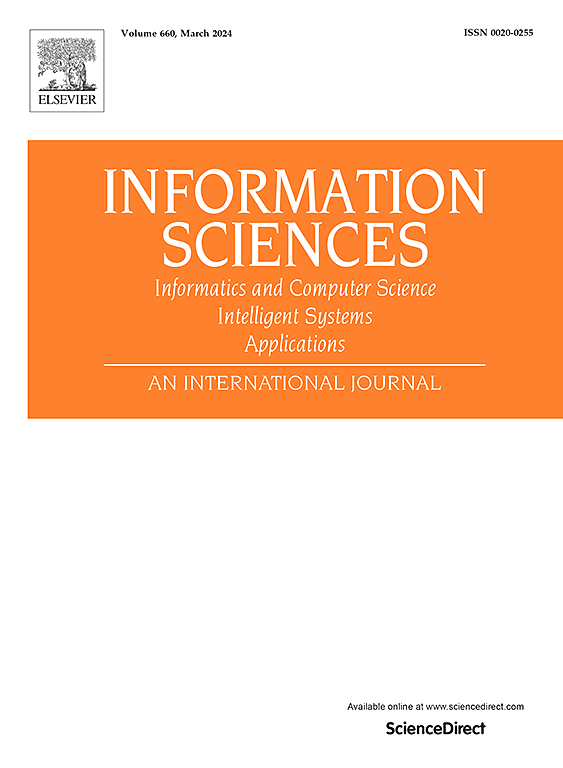Summarizing Boolean and fuzzy tensors with sub-tensors
IF 6.8
1区 计算机科学
0 COMPUTER SCIENCE, INFORMATION SYSTEMS
引用次数: 0
Abstract
The disjunctive box cluster model summarizes an n-way Boolean tensor with some of its sub-tensors and their densities, i.e., the arithmetic means of their values. Mirkin and Kramarenko proposed that easy-to-interpret regression model, for , and hill climbing to discover good sub-tensors, according to ordinary least squares. This article generalizes Mirkin and Kramarenko's work: n-way fuzzy tensors are summarized. They encode to what extent n-ary predicates are satisfied. The article also details significant performance improvements to the sequential execution, its parallelization, better starting points for hill climbing, a selection of the discovered sub-tensors, their ranking in order of contribution to the model, and the use of the elbow method to truncate the ordered list. In-depth experiments using synthetic and real-world tensors compare the proposed method, NclusterBox, to Mirkin and Kramarenko's and to the state-of-the-art algorithms for matrix factorization using the max (rather than +) operator and for Boolean tensor factorization. NclusterBox summarizes synthetic and real-world fuzzy tensors more efficiently and, most importantly, more accurately.
总结布尔张量和模糊张量的子张量
析取盒簇模型总结了一个n路布尔张量及其若干子张量及其密度,即它们值的算术平均值。Mirkin和Kramarenko提出了易于解释的回归模型,对于n∈{2,3},根据普通最小二乘爬山来发现好的子张量。本文推广了Mirkin和Kramarenko的工作:总结了n向模糊张量。它们编码n元谓词满足的程度。本文还详细介绍了顺序执行的显著性能改进、并行化、更好的爬坡起点、发现的子张量的选择、它们对模型的贡献顺序排序,以及使用肘形方法截断有序列表。使用合成张量和真实张量的深入实验将提出的方法NclusterBox与Mirkin和Kramarenko的方法以及使用max(而不是+)算子和布尔张量分解的最先进的矩阵分解算法进行了比较。NclusterBox更有效地总结了合成和现实世界的模糊张量,最重要的是,更准确。
本文章由计算机程序翻译,如有差异,请以英文原文为准。
求助全文
约1分钟内获得全文
求助全文
来源期刊

Information Sciences
工程技术-计算机:信息系统
CiteScore
14.00
自引率
17.30%
发文量
1322
审稿时长
10.4 months
期刊介绍:
Informatics and Computer Science Intelligent Systems Applications is an esteemed international journal that focuses on publishing original and creative research findings in the field of information sciences. We also feature a limited number of timely tutorial and surveying contributions.
Our journal aims to cater to a diverse audience, including researchers, developers, managers, strategic planners, graduate students, and anyone interested in staying up-to-date with cutting-edge research in information science, knowledge engineering, and intelligent systems. While readers are expected to share a common interest in information science, they come from varying backgrounds such as engineering, mathematics, statistics, physics, computer science, cell biology, molecular biology, management science, cognitive science, neurobiology, behavioral sciences, and biochemistry.
 求助内容:
求助内容: 应助结果提醒方式:
应助结果提醒方式:


